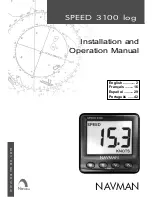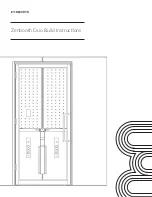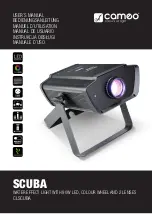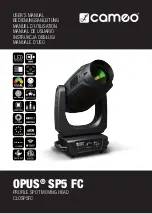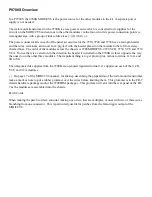
_______________________________________________________________________________________________________________________________
European Safety Systems Ltd.
Impress House, Mansell Road, Acton, London W3 7QH www.e2s.com Tel: +44 (0)208 743 8880
Document No. D204-00-201-IS Issue 8 10-09-2023 Sheet 2 of 6
Temperature Classification:
T1
450ºC
T2
300ºC
T3
200ºC
T4
135ºC
T5
100ºC (STEXCP8-P*-D-L or C only up to
Tamb 65°C)
T6
85ºC (STExCP8-P*-D
only up to Tamb
60°C) (STEXCP8-P*-S-L or C only up to
Tamb 65°C) (STEXCP8-P*-D-L or C only
up to Tamb 50°C)
IP Rating:
IP66/67 to EN/IEC60529 and IP6X to
EN/IEC60079-0, EN/IEC60079-31
Equipment Category:
2G
Equipment Protection Level:
Gb
Ambient Temperature Range:
-55°C to +70°C Gas Groups IIA, IIB and IIC
2.2 DNV Type Approval
The units have been tested and approved for the installation
on ships in the following locations:
Temperature
:
Class A,B,C & D (all locations including
open decks and masts)
Humidity:
Class A & B (all locations)
Vibration:
Class A (all locations except installation on
machinery such as combustion engines,
compressors, pumps, including piping on
such machinery)
EMC:
Class A & B (all locations including open
decks and bridge)
Enclosure:
Class A, B & C
– IP56 (all locations except
submerged applications and bilges)
3) Type Approval Standards
The beacon carries an EC Type Examination Certificate and
IECEx Certificate of Conformity, and have been certified to
comply with the following standards:
EN60079-0:2012+A11:2013 / IEC60079-0:2011 (Ed 6):
Explosive Atmospheres - Equipment. General requirements
EN60079-1:2014 / IEC60079-1:2014 (Ed 7):
Explosive Atmospheres - Equipment protection by flameproof
enclosures "d"
4) Installation Requirements
The beacon must only be installed by suitably qualified
personnel in accordance with the latest issues of the relevant
standards:
EN60079-14 / IEC60079-14: Explosive atmospheres -
Electrical installations design, selection and erection
EN60079-10-1 / IEC60079-10-1: Explosive atmospheres -
Classification of areas. Explosive gas atmospheres
The installation of the beacon must also be in accordance
with any local codes that may apply and should only be
carried out by a competent electrical engineer who has the
necessary training.
The equipment must not be installed with any obstruction to
the flanged flameproof joint any closer than permitted as per
EN/IEC60079-14, table 13.
5) Special Conditions of Use
On completion of the installation the flameproof joint surfaces
should be inspected to ensure that they are clean and that
they have not been damaged during installation. Flameproof
joints are not permitted to be repaired.
When fitting the flameproof cover ensure the cover is sitting
flat and correctly positioned on the base. Insert the M6 x 40
cover bolts and fully tighten down (tightening torque 8.8Nm),
ensuring no gap is visible between the cover and base of the
enclosure.
The metallic enclosure has a non-conductive coating. These
may generate an ignition-capable level of electrostatic
charges under certain extreme conditions. The user should
ensure that the equipment is not installed in a location where
it may be subjected to external conditions that might cause a
build-up of electrostatic charges on non-conducting surfaces.
Additionally, cleaning of the equipment should be done only
with a damp cloth
.
The M12 Cap fitted to the top side of the unit is not a user
serviceable part and must not be removed during installation
and maintenance.
6) Location and Mounting
The location of the call point should enable ease of access
for operation and testing. The unit should be mounted using
the 4 off fixing holes which will accept up to M5 sized fixings.
They should only be fixed to services that can carry the
weight of the unit.
To gain access to the mounting holes in the base the front
cover must be removed. See Section 7.
Fig. 1 View of base unit showing fixing centres (in mm).


















